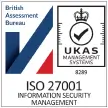What are the most common types of cyber threats?
The most common types of cyber threats include malware (like viruses, ransomware, and spyware), phishing attacks, man-in-the-middle (MITM) attacks, denial-of-service (DoS) attacks, and SQL injection. Each of these threats exploits different vulnerabilities in systems, networks, and human behavior to gain unauthorized access or cause damage.
View More
How can I identify potential vulnerabilities in my system?
Identifying vulnerabilities requires a combination of automated tools and manual testing. Regular vulnerability assessments and penetration testing can help discover weak spots in your system. Additionally, keeping software and systems up to date, monitoring network traffic, and conducting security audits are crucial for identifying and addressing vulnerabilities.
View More
What is ransomware, and how can I protect my organization from it?
Ransomware is a type of malware that encrypts a victim's files, rendering them inaccessible until a ransom is paid. To protect against ransomware, it is essential to maintain regular backups of critical data, keep all software and operating systems up to date, employ robust endpoint protection, and educate employees about the dangers of phishing and suspicious downloads.
View More














